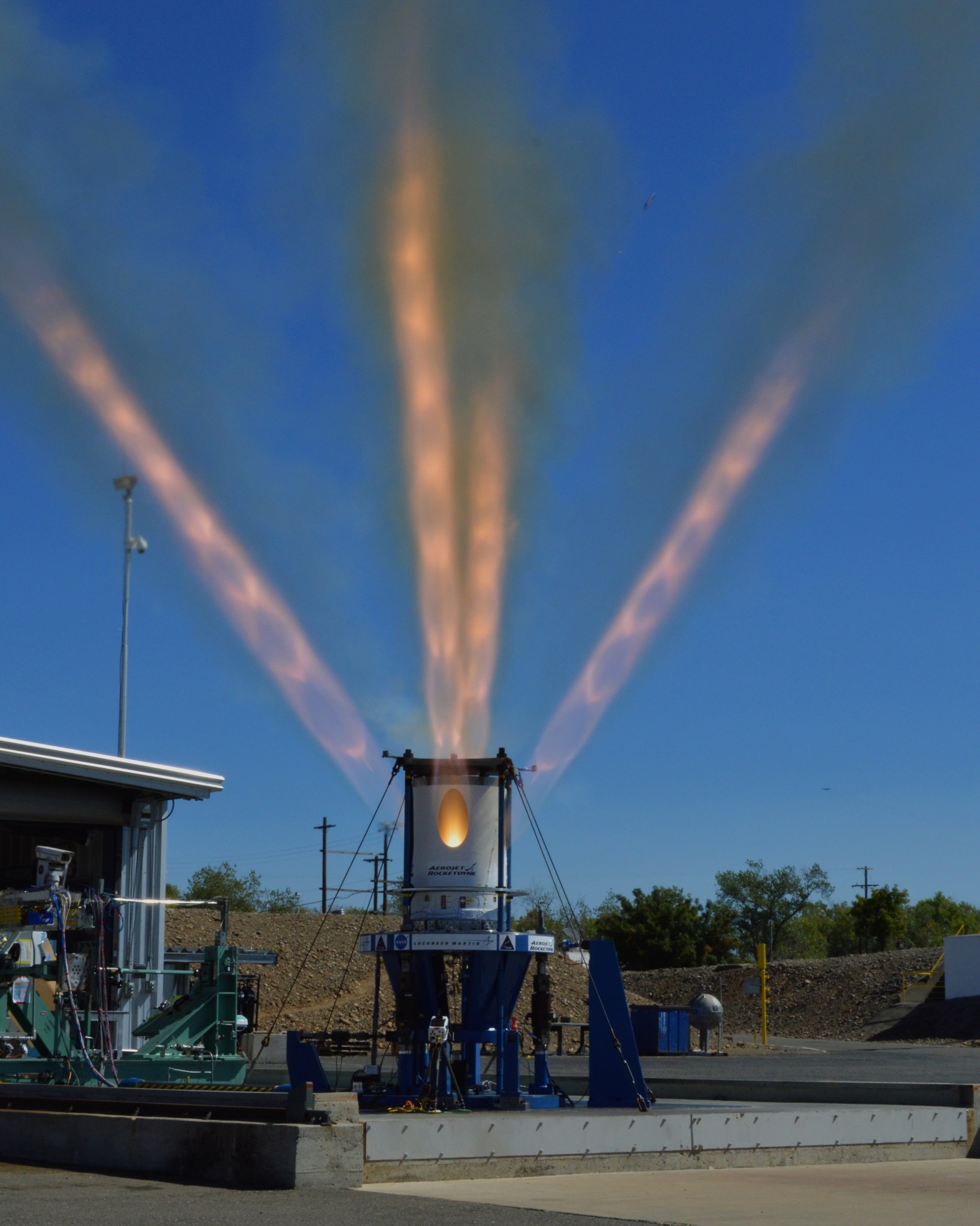Applause resounded from NASA and its partners as they watched Orion’s jettison motor generate 40,000 pounds of thrust in just a blink of an eye, preparing the spacecraft for its first integrated mission with the Space Launch System rocket.
Onlookers had just witnessed a 1.5-second jettison motor test firing at Aerojet Rocketdyne’s facility in Sacramento, California.
The Orion launch abort system (LAS) is designed to protect astronauts in the unlikely event there is an issue during launch by pulling the spacecraft away from the rocket during a mission. The jettison motor is activated during ascent to separate the launch abort system from the spacecraft after it is no longer needed during a mission.
“This test showed us that the jettison motor can quickly generate the amount of thrust needed to pull the LAS away during an Orion mission,” said Tim Larson, jettison motor principle engineer for Lockheed Martin who has been with the project since inception. “I’m very pleased with how the test went.”
The fifth firing
The jettison motor has now undergone five tests, including two test flights. Each test in the series builds upon each other, moving the nation forward on its journey to Mars.
The motor used for the fifth test was rebuilt from a previous test motor.
“We were able to recycle some of the parts from the second ground test and use it for this test,” said NASA LAS project manager Robert Decoursey. “We not only went green, but we also saved money.”
Inside and around the test motor were instruments that included strain gauges, accelerometers and pressure transducers, which feed engineers high-quality data that show whether the motor design is ready for upcoming flight tests and missions. This motor had more instruments and produced more data than any of the previous tests.
“There are many intricate details in the jettison motor design that are not obvious from the outside, and the consistent orchestration of those details are most important to obtain predictable performance,” said NASA LAS deputy project manager Deborah Crane. “Aerojet Rocketdyne has done an excellent job executing this test on schedule.”
The jettison motor bakery
Creating a jettison motor is like baking two big cakes and making enough batter for some leftover cupcakes, according to Tim Warner, NASA LAS business manager.
What’s most exciting for the team, besides the successful test, are the latest upgrades to their baking and mixing tools.
“We were using two mixing batches to make just one motor, but have recently upgraded to a larger mixing bowl, saving us time and money,” Decoursey said.
The new mixing bowl can hold up to 450 whopping gallons of cake batter, or in NASA terms, motor propellant.
The team mixes up the batter in this large mixing bowl and evenly splits the batter into two pots for a perfectly sculpted jettison motor.
Any leftover propellant is used to make small test motors. The smaller motors are used to check the propellant’s combustion capabilities before the motors are accepted for test or flight.
What’s next?
NASA and its partners are expected to perform the last flight test of the launch abort system in 2019 before they begin sending crew to deep space aboard Orion. During the final test, an uncrewed Orion capsule will launch from a modified Peacekeeper missile and demonstrate a successful abort under the highest aerodynamic loads it could experience during a mission.
The jettison motor will be used during Orion’s first integrated mission with SLS, known as Exploration Mission-1 (EM-1) in late 2018. The mission will be the second test flight for Orion, and the first for SLS. EM-1 will send Orion on a three-week journey approximately 40,000 miles beyond the moon. The test will demonstrate the integrated performance of the rocket and spacecraft before their second test flight together, Exploration Mission-2, which will carry crew.
The LAS is led out NASA’s Langley Research Center in Virginia in collaboration with NASA’s Marshall Space Flight Center in Alabama.





























